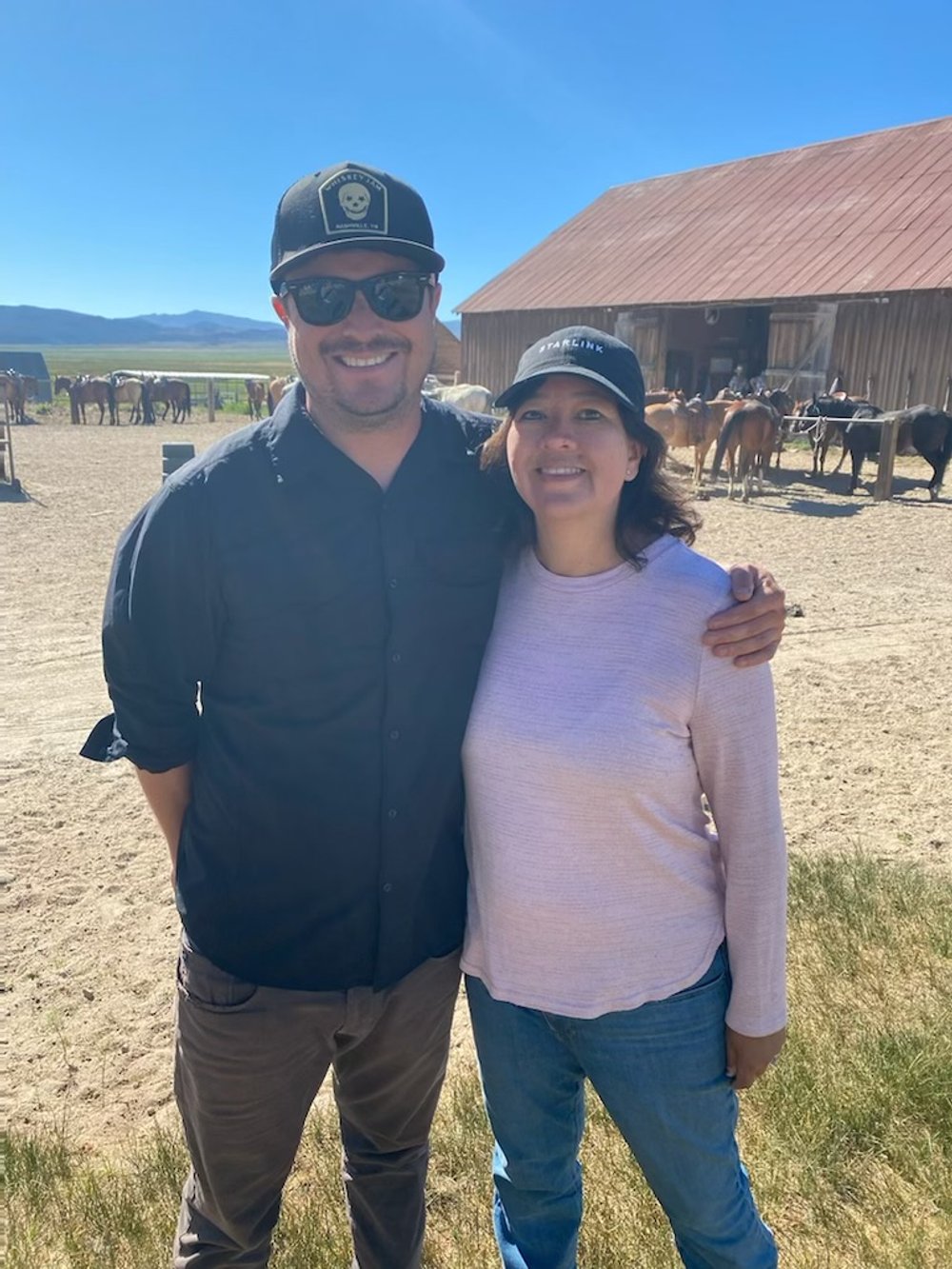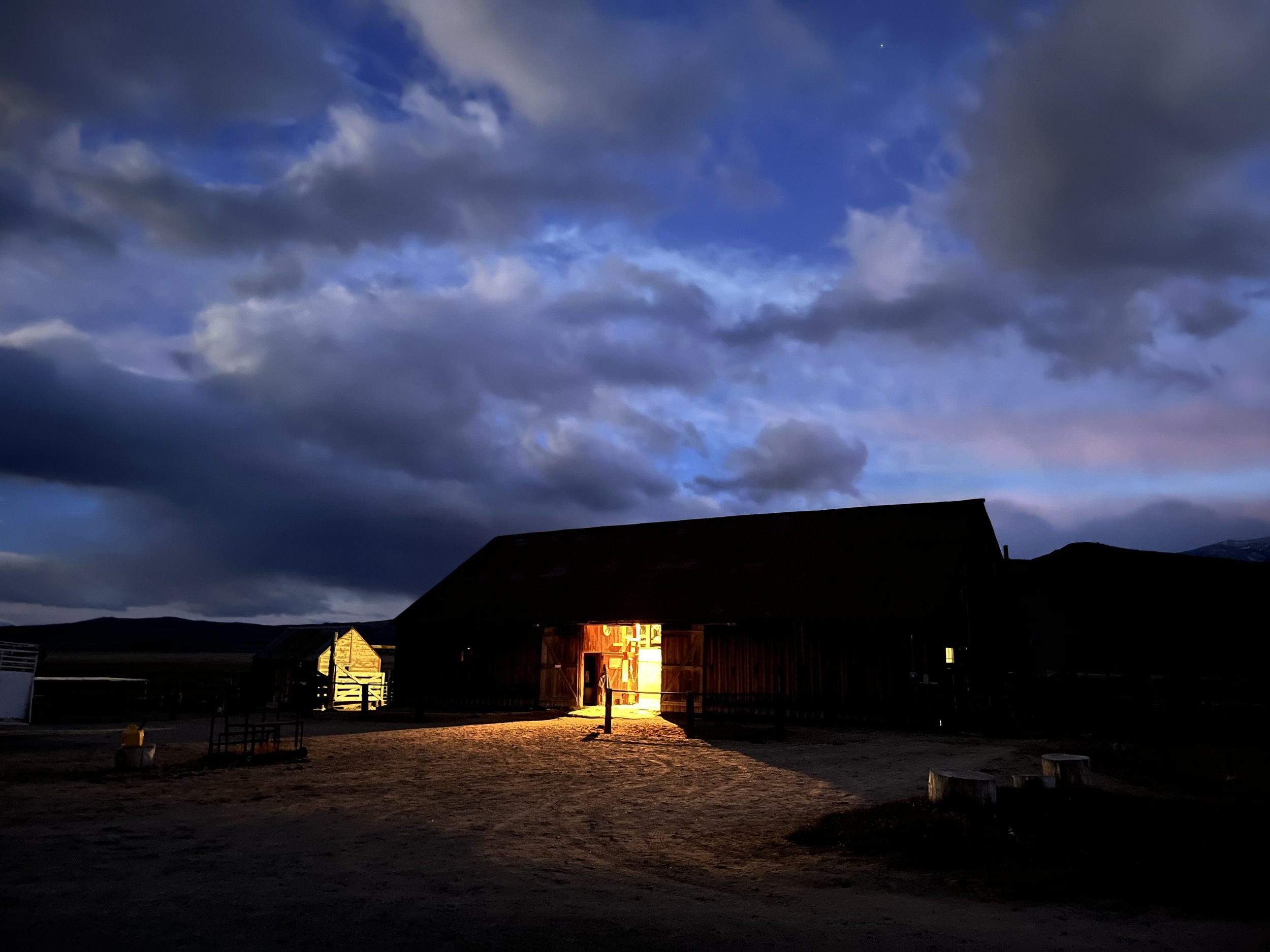The Hunewill Barn
The Hunewill barn is one of my favorite structures to take photos of.
The Hunewill Guest Ranch is a place my family and I have visited off-and-on since I was 8 years old.. It’s where I learned how to ride a horse with a broken arm, took my first film photo at the age of 10 on a Nikon N2000, drove a car on my own at 13, and still find inspiration, peace, and new friends every summer.
From the left my Dad, Mom, sister, and… me.
These days my business partner and I go back every year to take photos and videos for the Ranch’s social media accounts. I consider myself incredibly lucky to get to be in one of my favorite places in the world while doing my job.I have so many memories of my family being there and growing up that I now get to apply those feelings to actual art that gives back to the ranch as a business. I get to help capture and preserve the Hunewill magic.
All the cameras I have been shooting with at the ranch lately.
My sister and I taken last summer.
The Hunewill ranch has been around for generations and is nestled in the eastern sierras… you know what, just watch these videos I directed for them:
You can look in any direction at this ranch and see something to photograph.
The barn has ALWAYS been one of my favorite things to snap. I don't know if it's because it's the place we depart from and come back to every day on the ride. Or it's where we learn our horses' names for the week and eat apple pie.
Maybe it's the physical representation it has. The barn is where we learn how to ride a horse and wear our swords on our left. the wranglers spend early mornings preparing our steeds while listening to music. The names of guests can be found on a board in the barn that changes every week. There's a sword on a beam that's never been explained, and below, there's a tribute to all the horses that have passed on.
Last year I got to ride along and take photos of their yearly cattle drive. Before it got to 10 below, I snapped a photo of the barn in the snow. I’ve taken film photos and digital photos, black and white and color… from a horse and from the ground. It never gets old seeing and documenting it from a new perspective.
This astrophotography night photograph with the stars behind it is one of the most popular photos I've ever posted on Instagram (I hated just typing that). It's been well-liked when people have seen it online and as a print that's hanging in the Hunewill dining room. I have sold, and am still planning on, selling it as a print for those interested…get in touch with me or stand by for my new print shop to launch later this summer.
It's Sparked a lot of questions on the process behind, and equipment used, to make it come to life. First of all, it took several years for me to be in the right place at the right time for this photo. All that means is that I haven't been to the ranch when there was a New Moon, clear skies, and I was willing to stay awake.
It hasn't been possible in my experience to achieve this kind of photograph with any sort of ambient skylight. The moon in the sky would certainly not let you hit the right amount of time needed to expose this photo, and a nearby city would be too ambient to let the sky be clear. There would also need to be a clear sky, no clouds, no dust, and no creeping fog. If all those conditions are right and you're able to stand and stay awake after a day of loping through the meadows and good chow, then all you need is a camera and a tripod.
Now, let's get into some techy nerdy stuff.
On this particular shot, I used my Leica q2. Big surprise. It is a full-frame camera with a 47-megapixel sensor and a 28mm fixed lens. I shot it at F1.7 - I don't normally recommend this. You'd really want to be able to get more in focus if possible. Unfortunately, this camera won't let you shoot for a very long time if you are at higher ISOs.. so I was automatically limited by my sensitivity in the camera (which is a whole other discussion about Leica engineers). Also, a 28mm is probably not the best lens to be used for astrophotography - you'd want to conventionally be wider. You do not need to follow any rules anyone tells you, this is an example of that - go out and use the settings you need to use for what you need to do.
HOWEVER. You do need to follow one rule when trying to freeze-frame stars. And that's the 500 Rule. I don't want to bore you with all the physics and science behind what it all means. Suffice it to say we can't leave the shutter open for too long because we are on an ever-rotating sphere and those stars are going to move (sorry flat earthers)…. And they move more or less based on the lens and sensor you're using, which will force your hand in your shutter choice. This article does a much better job of explaining that: LINK
So long answer long. I used a 12-second shutter to let all that light in at ISO 800.
The frame is one I knew. No difficulty there, I've shot this barn 100 times. I used my peak tripod I travel all around with and a 2-second delay timer to fire the shutter. If you use your hand to press the button you'll end up shaking the camera no matter how smooth you think you are…that tripod is going to move. You can also get around this by having a release trigger or connecting to your camera wirelessly. On top of all that I had a red light headlamp to keep my eyes adjusted to the dark and prayed that the folks in the kitchen would turn the light off.
The post-editing on this photo gets to be a bit much. And I am considering doing an entire video and blog post about it, but let's just say… I brought up the exposure, crushed the blacks, brought up the highlights (stars), added a decent amount of sharpening, and used a gradient filter to help lift the colors in the sky a bit, isolating the sky from the barn itself. Here is a raw before and the after:
I am particularly proud of this photo for many reasons, the technical aspects of its execution being one of them, but the patience and intentionality behind it is ultimately the most gratifying part. My photographic style always lends itself to being an observer and reacting to the world around me. I place myself in a situation and use the tools I have to capture a feeling and mood based on what's right in front of me. With this photo, I thought about it for years. I planned where I would be, and what settings I needed based on my lens distance and the time of night. I researched the weather, the moon phase, and what time the milky way would be in the exact right place I wanted it to be. Intentional. I’ve never felt more satisfaction than putting so much work into a vision and accomplishing it, maybe more so when the product is simply a single photograph.
A movie or a book or a collection of things is just that; a series of many things, but when you decide to make one thing that's consumable by just looking at it… what a satisfying way to make art.













